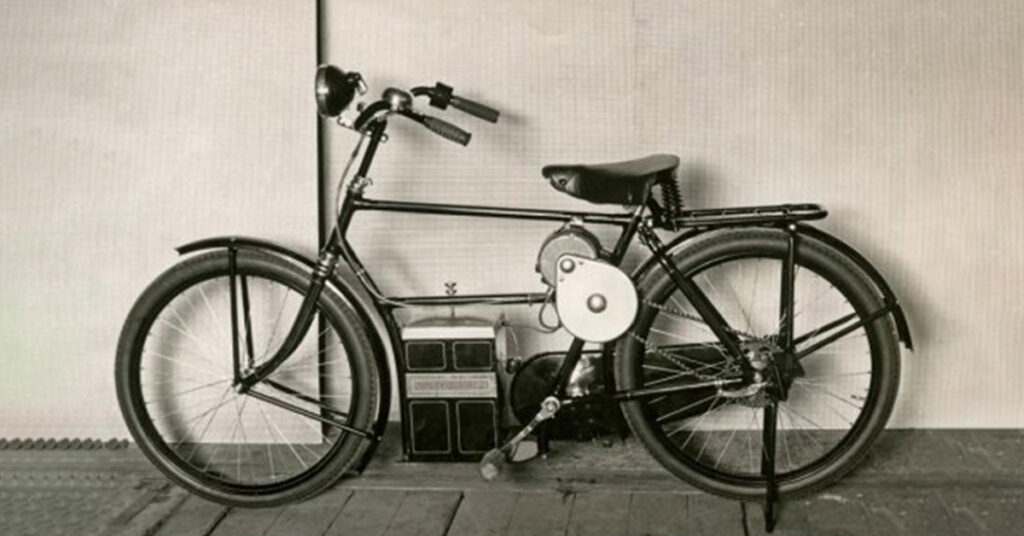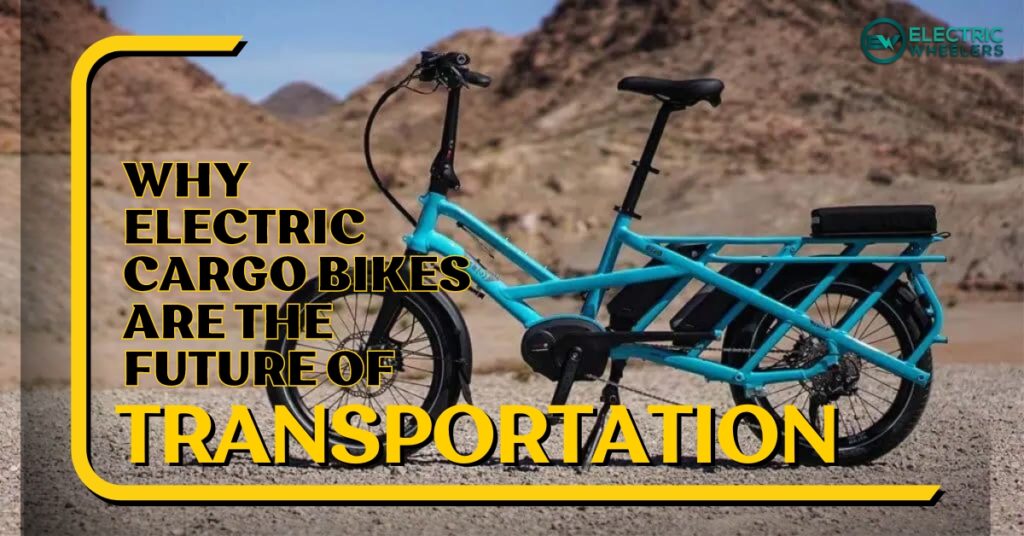Electric bikes are a fusion of time-tested engineering and modern innovation. Once seen as tools for the elderly, they’re now a trendy transport choice for all.
As battery technology advanced, so did e-bikes. Today, they’re not just a mode of transportation; they’re a statement.
In this article, we’ll journey through the electrifying history of e-bikes, from their earliest patents to their current status as urban must-haves. Let’s pedal into the past and coast into the present.
The Dawn of Electric Bikes: 1880s to 1890s
The late 19th century was a time of innovation and wonder, and the realm of bicycles was no exception.
In France, inventors were pushing the boundaries of what a bicycle could be, leading to the creation of a three-wheeled electric marvel. This unique contraption, unlike anything seen before, was powered electrically and controlled with a hand-held lever system, completely devoid of pedals.
Across the Atlantic, in the United States, Ogden Bolton Jr. was making waves with his own electric bike design. In 1895, he patented a battery-powered bicycle that featured a hub motor neatly tucked inside the rear wheel.
The battery, strategically placed within the frame’s main triangle, showcased a design concept that modern e-bikes still echo.
The Inventor of the Electric Bike
But the innovations didn’t stop there. Hosea W. Libbey of Boston took the e-bike concept further by introducing a bicycle propelled by a “double electric motor” in 1897.
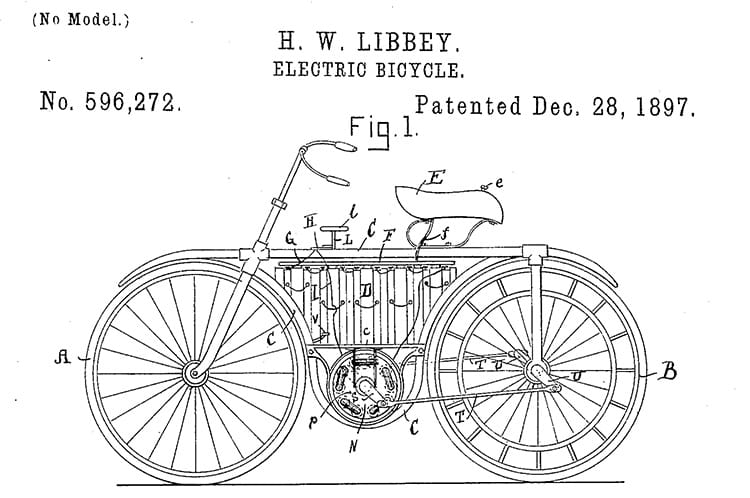
This motor, ingeniously designed within the hub of the crankset axle, set the stage for future e-bike designs. However, the dual-hub motor is very rare these days.
Figuratively speaking, the 1880s and 1890s were the dawn of the electric bike era, laying the foundation for a transportation revolution.
The Lost Era: When Cars Overshadowed Bikes
As the 20th century began, the world stood on the cusp of an automotive revolution. The allure of the automobile, with its promise of speed, power, and freedom, began to captivate the masses.
Cities started to reshape themselves around roads and highways, and the roar of engines became a familiar sound. In this vehicular frenzy, bicycles, including their electric counterparts, found themselves pushed to the sidelines.
The once-celebrated e-bike designs, which had sparked so much interest in the previous decades, were now overshadowed by the rise of combustion engines.
Cars, with their ability to cover long distances quickly and offer a protected environment against the elements, became symbols of modernity and progress.
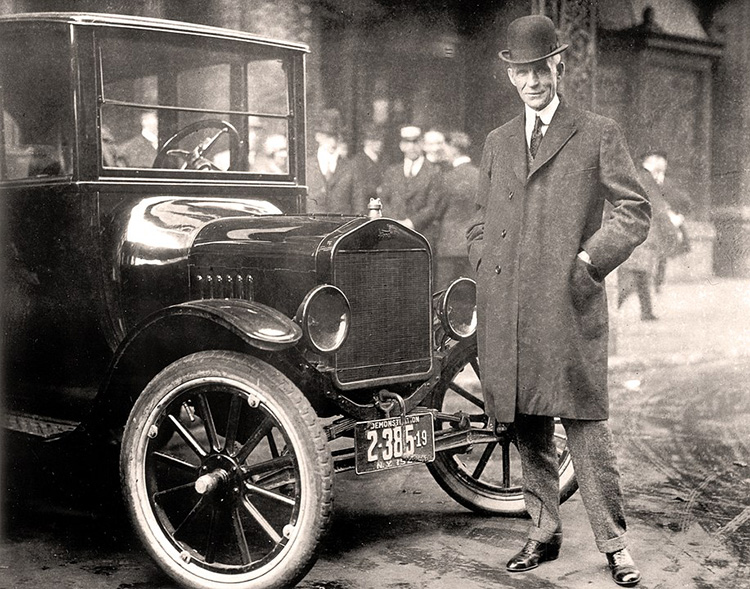
The humble bicycle, electric or not, struggled to find its place in this new world order. It was a time when the promise of electric bikes was momentarily dimmed, lost in the exhaust fumes of the burgeoning automobile industry.
The world had chosen its champion, and for a while, it seemed the chapter on e-bikes had been prematurely closed.
The Resurgence In The Mid-20th Century
As the decades rolled on, the world began to witness a subtle shift. The initial infatuation with cars started to wane as cities became congested, pollution levels rose, and the environmental consequences of rampant automobile use became evident.
Amidst this backdrop, the bicycle began its quiet resurgence. The mid-20th century saw Europe, with its narrow streets and rich cycling heritage, leading the charge. Electric bikes, which had once been overshadowed, began to re-emerge, symbolizing a blend of tradition and innovation.
Companies and inventors revisited the concept, driven by a renewed interest in sustainable transportation. Collaborations, like the one between Philips and Simplex in the 1930s, aimed to bring e-bikes back to the mainstream.
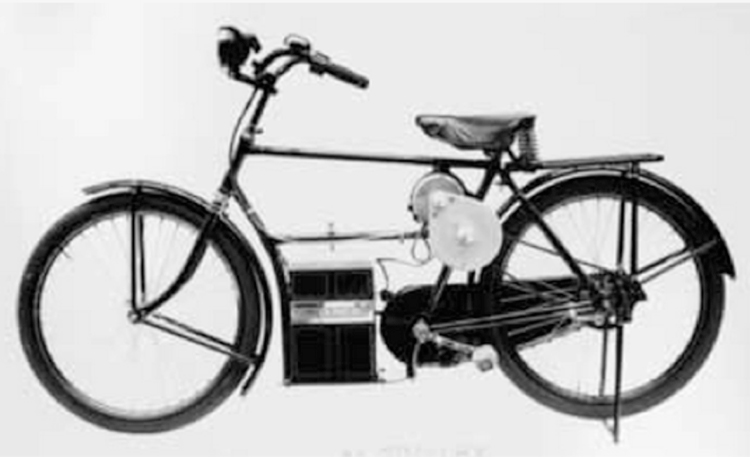
The focus shifted from mere transportation to smarter, eco-friendly mobility solutions. This era wasn’t just about reviving the e-bike; it was about reimagining its place in a world that was slowly waking up to the need for sustainable choices.
The mid-century marked the beginning of a journey, one that would see the electric bike reclaim its rightful place in the annals of transportation history.
A New Era of Innovation Since the 1980s
The 1980s marked a pivotal moment in the e-bike narrative, ushering in a period of unparalleled innovation.
Yamaha, the Japanese automotive giant, was at the forefront, crafting a prototype e-bike in 1989 and introducing the world to the pedal assist system by 1993.
This system transformed the e-bike experience, making it more intuitive and user-friendly.
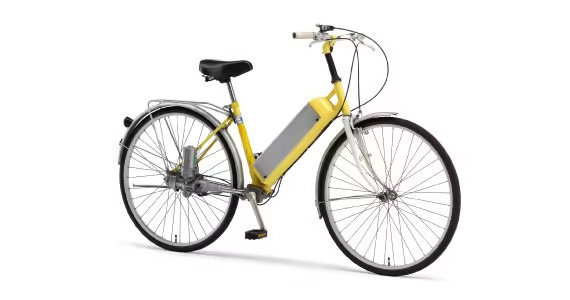
Around the same time, Vector Services Limited launched the Zike e-bike, one of the earliest commercial e-bikes, signaling the market’s readiness for electric bicycles.
The term ‘Pedelec’ (pedal electric cycle) emerged, defining bikes where motor power is activated with pedaling, a concept that revolutionized e-bike usage.
Michael Kutter, an innovator in his own right, took this idea from personal projects to commercial successes, collaborating with the Velocity Company to bring his vision to the masses.
As e-bikes evolved, a debate brewed: throttle or pedal assist? Modern companies, recognizing the merits of both, began integrating them into their designs, offering riders unparalleled flexibility.
Lee Iacocca’s EV Global Motors played a pivotal role in the US, making e-bikes a household name. But it wasn’t just about design; the battery technology transformed. The once bulky lead-acid batteries gave way to lightweight Li-ion alternatives, enhancing efficiency and range.
And as the industry grew, so did the need for clear terminology. Distinctions were drawn between e-bikes, which assisted pedaling, and electric motorbikes, which operated solely on motor power.
The 1980s were chapters in the ever-evolving story of e-bikes, each page brimming with innovation.
A Slow but Steady Rise in The Late 20th Century
The closing decades of the 20th century saw the e-bike industry mature, evolving from its experimental phase to a more defined and structured market presence.
Central to this evolution were the advancements in sensor technology and power controls. These innovations not only made e-bikes more efficient but also significantly enhanced the overall riding experience.
Riders could now enjoy smoother transitions between pedaling and motor assistance, making journeys more seamless and enjoyable.

However, the market dynamics presented a unique challenge. Traditional bicycles, with their simplicity and long-standing history, still dominated the landscape. E-bikes, despite their technological prowess, faced the task of carving a niche for themselves amidst this bicycle stronghold.
While the production of regular bicycles peaked, e-bikes began their slow ascent, gradually gaining traction and acceptance.
Related: Pros and Cons of Electric Bikes
The late 20th century wasn’t about rapid growth for e-bikes; it was about steady progress, laying the groundwork for the boom that the next century would bring.
It was a period of reflection, innovation, and persistence, setting the stage for the e-bike’s meteoric rise in the 21st century.
The Ebike Boom In The 21st Century
The dawn of the 21st century heralded a transformative era for electric bikes, propelling them from niche alternatives to mainstream marvels.
Cities across the globe began to feel the electric pulse, with e-bikes reshaping the very fabric of urban commuting. No longer just a mode of transport, they became symbols of sustainable, efficient, and modern mobility.
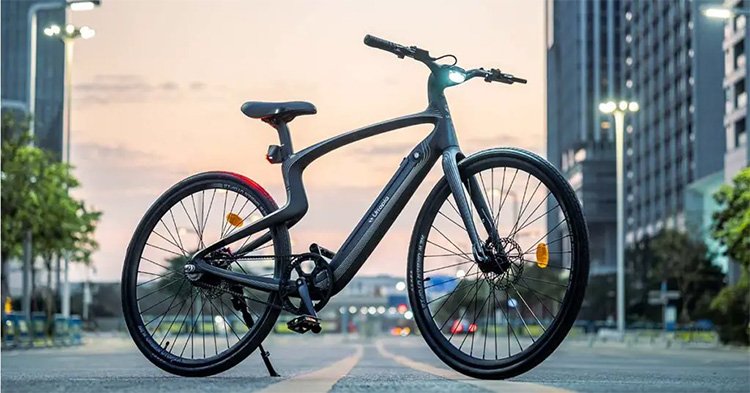
As urban landscapes became more congested, e-bikes emerged as the perfect antidote, offering swift navigation through bustling streets while leaving a minimal carbon footprint.
But the revolution wasn’t confined to city streets. The rugged terrains of mountain biking witnessed an electric twist.
The introduction of e-bikes and fat-tire bikes brought a fresh wave of enthusiasts to the sport, making challenging trails accessible and amplifying the thrill.
Back in the urban jungle, e-bike designs evolved to cater specifically to city dwellers. Sleek, efficient, and tailored for daily commutes, these designs made every ride a pleasure, turning mundane commutes into enjoyable journeys.
The 21st century wasn’t just witnessing the rise of the e-bike; it was living the e-bike boom.
Conclusion: The Electric Future
E-bikes represent more than just a mode of transportation; they are catalysts of change, reshaping lives and redefining mobility.
As we stand on the cusp of their 120-year legacy, it’s a moment to celebrate the relentless innovation and evolution that have transformed a simple idea into a global phenomenon. From their humble beginnings to their current status as urban mobility champions, e-bikes have consistently showcased their boundless potential.
Looking to the horizon, the future of e-bikes seems luminous, promising to further revolutionize transportation and lifestyle. Their transformative impact is evident in every city alley and mountain trail, making commutes efficient, sustainable, and enjoyable.
Read next: The History of Electric Scooters

The founder and the editor-in-chief of the Electric Wheelers blog. With a previous background in IT, sales, and video editing, he has now established himself as a micromobility expert.
He bought his first e-scooter over 5 years ago and since then has owned dozens of e-scooters and e-bikes. His deep understanding of the technical aspects, coupled with a keen eye for market trends, enables him to provide insightful and reliable content.
His commitment to promoting sustainable and efficient urban mobility solutions has made him a respected voice in the community of eco-friendly transportation enthusiasts.

